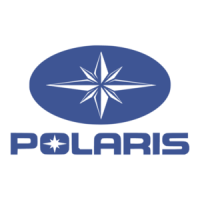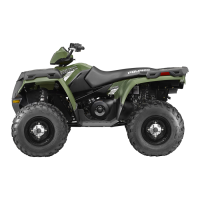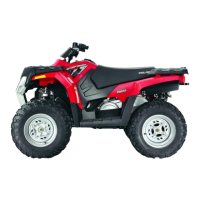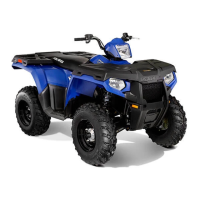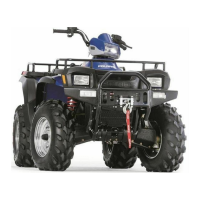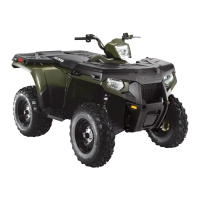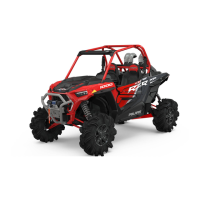MAINTENANCE
2.21
Replace any worn or damaged steering components. Steering
should move freely through entire range of travel without
binding. Check routing of all cables, hoses, and wiring to be
sure the steering mechanism is not restricted or limited. NOTE:
Whenever steering components are replaced, check front end
alignment. Use only genuine Polaris parts.
One of two methods can be used to measure toe
alignment: The string method and the chalk method. If
adjustment is required, refer to following pages for
procedure.
TIE ROD END/STEERING INSPECTION
To check for play in the tie rod end, grasp the steering tie rod,
pull in all directions feeling for movement.
• Repeat inspection for inner tie rod end (on steering
post).
• Replace any worn steering components. Steering
should move freely through entire range of travel
without binding.
• Elevate front end of machine so front wheels are off the
ground. Check for any looseness in front hub / wheel
assembly by grasping the tire firmly at top and bottom
first, and then at front and rear. Try to move the wheel and
hub by pushing inward and pulling outward.
• If abnormal movement is detected, inspect the hub
and wheel assembly to determine the cause.
CAMBER AND CASTER
The camber and caster are non-adjustable.
TOE ALIGNMENT
1. Place machine on a smooth level surface.
2. Set handlebars in a straight ahead position and secure
handlebars in this position. NOTE: The steering arm can be
used as an indicator of whether the handlebars are straight.
The arm should always point straight back from the steering
post.
3. Place a chalk mark on the center line of the front tires
approximately 10” (25.4 cm) from the floor or as close to
the hub/axle center line as possible. NOTE: It is important
that the height of both marks be equally positioned in order
to get an accurate measurement.
4. Measure the distance between the marks and record the
measurement. Call this measurement “A”.
5. Rotate the tires 180
o
by moving vehicle forward or
backward. Position chalk marks facing rearward, even with
the hub/axle centerline.
6. Again measure the distance between the marks and record.
Call this measurement “B”. Subtract measurement “B”
from measurement “A”. The difference between
measurements “A” and “B” is the vehicle toe alignment.
The recommended vehicle toe tolerance is 1/8” to 1/4” (.3
to.6 cm) toe out. This means the measurement at the front
of the tire (A) is 1/8” to 1/4” (.3 to.6 cm) wider than the
WARNING
Due to the critical nature of the procedures outlined in this
chapter, Polaris recommends steering component repair
and adjustment be performed by an authorized Polaris
Dealer. Only a qualified technician should replace worn or
damaged steering parts. Use only genuine Polaris
replacement parts.
Check for Loose Wheel or Hub
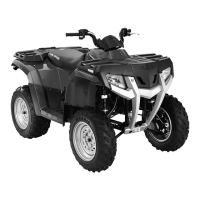
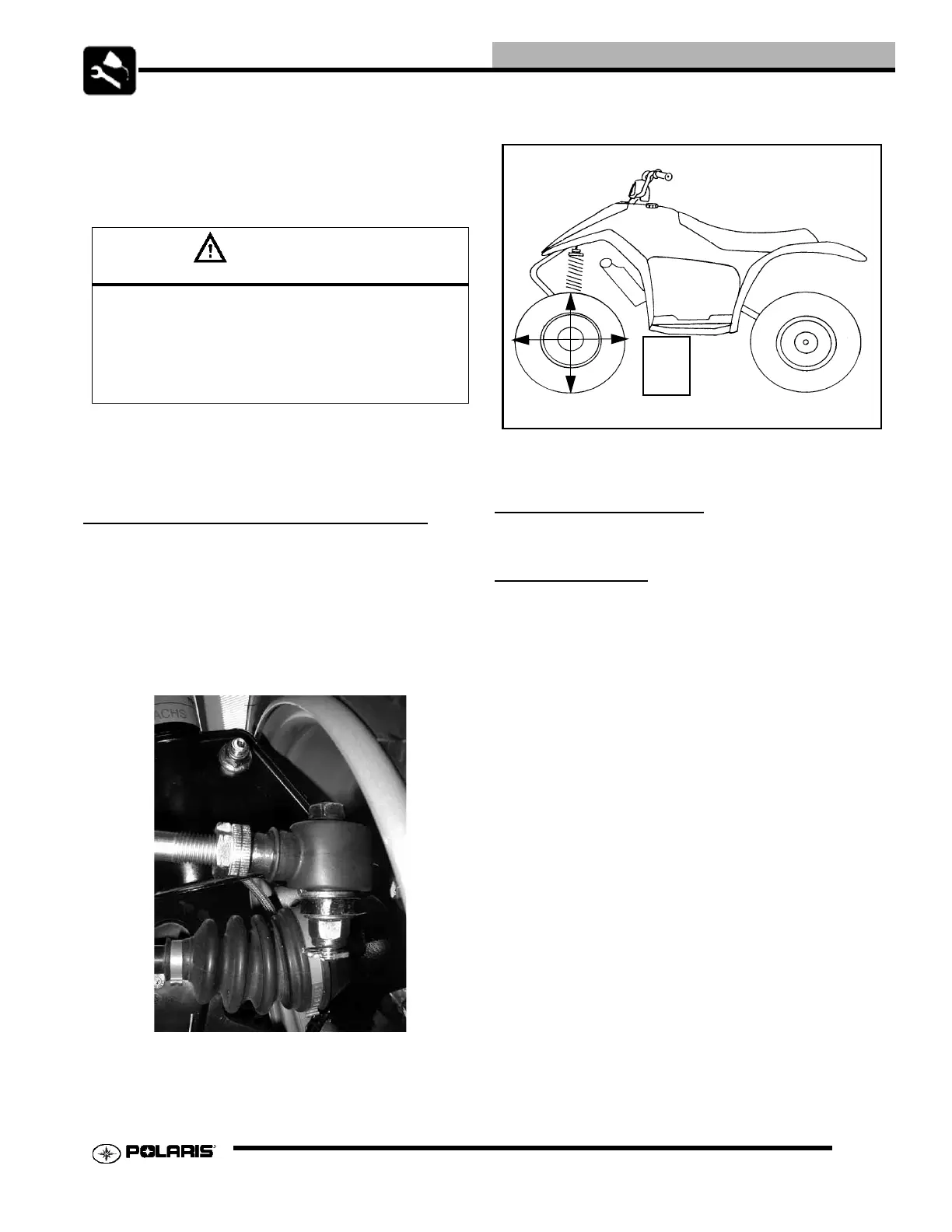